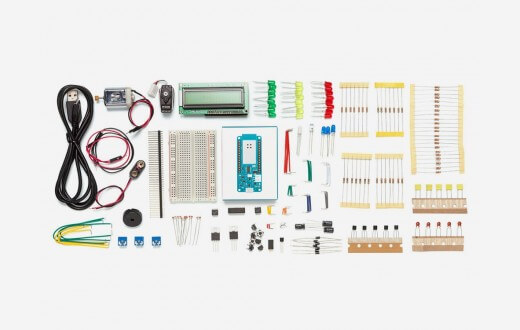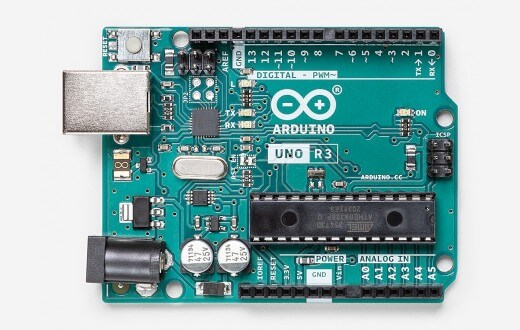
Microcontroller
You'll also need a USB cable to plug your board into your computer. These usually come with the board.
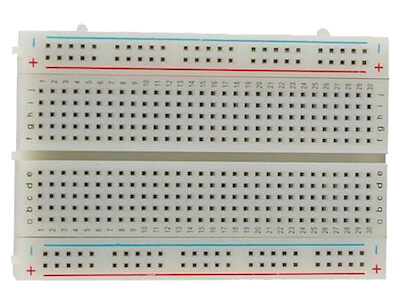
Solderless Breadboard
Underneath the plastic grid, strips of conductive material allow current to flow through the components on your breadboard. Learn more about how solderless breadboards work in Project One.
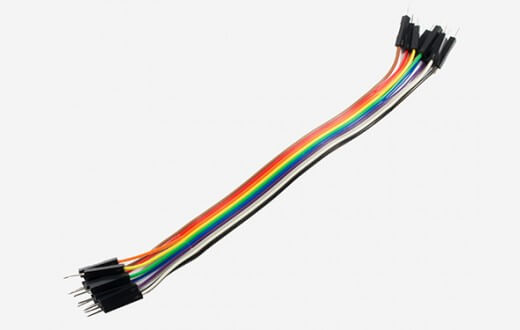
Jumper wires
The colors of your wires won't affect your circuit, but it's easier to use a variety of colors to help distinguish the different parts of your circuit.
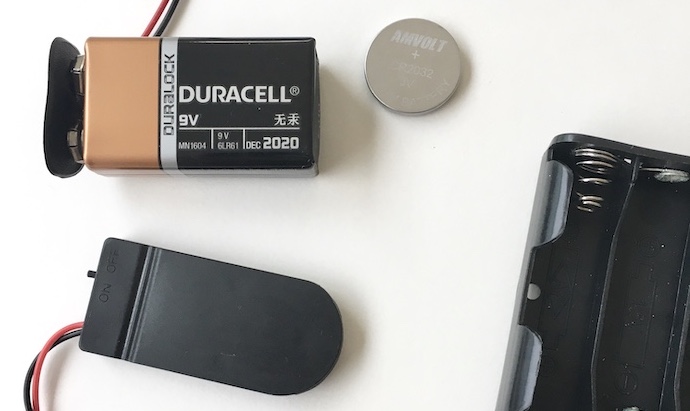
Batteries
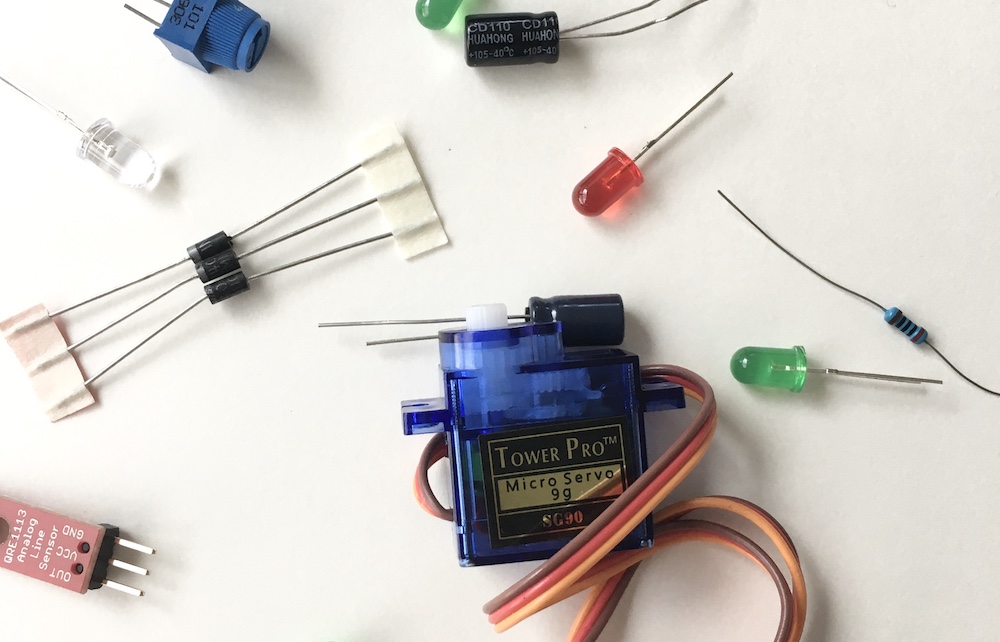
Breadboard Components
